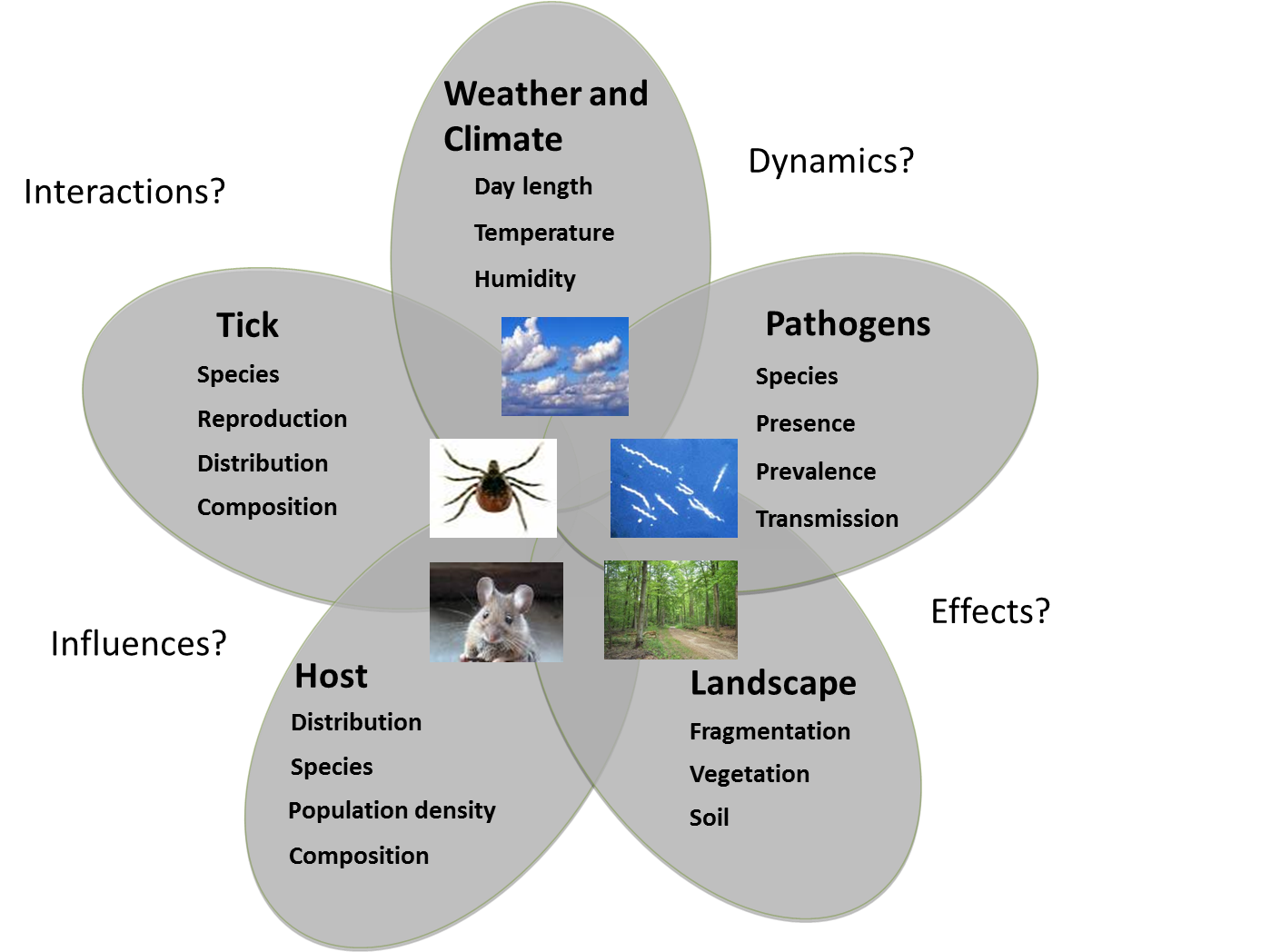Project aims
Ticks are the main vectors of disease to humans and animals in Europe. The pathogens transmitted include bacteria, viruses and protozoa, including the causative agent of Lyme disease (Borrelia burgdorferi sensu lato) and tick-borne encephalitis (TBE). The presence of tick-borne diseases in a region is affected by a variety of factors. Thus, for example, ecological and micro-and macroclimatic factors influence the abundance of ticks and their hosts. Although many of these factors are already known and a lot has been published about ticks and tick-borne diseases in the last decades, there has been no long-term study in Central Europe in which the influences of environmental factors, the population dynamics of the vertebrate hosts of ticks, the ticks themselves and the pathogens they transmit have been well documented. Without information about these factors, however, it is impossible to describe and understand changes in the abundance and spread of ticks and tick-borne diseases of humans correctly. The same applies to the development and introduction of appropriate prevention and control strategies.
Our goal is to create a model for the environment-tick-host-pathogen interactions in Baden- Württemberg, and to determine and evaluate the role of individual abiotic and biotic factors for tick populations and the pathogens they transmit.

